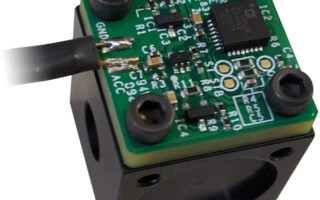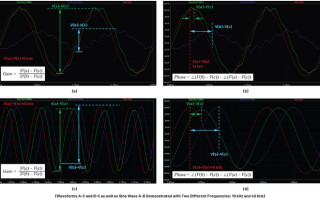Analog Devices
PO Box 9106
Norwood, MA 02062 [email protected]
(781) 329-4700
https://www.analog.com/en/index.html

Open-Source, Reusable Software Stack Enables Real-Time Processing and Algorithm Development for CbM - Blog
August 20, 2021Introduction to the CN0549 Condition-Based Monitoring Platform
High Fidelity Vibration Acquisition for Condition Monitoring - Blog
August 19, 2021This article explains how recent advancements in MEMS technology have pushed accelerometer sensors to the forefront, rivaling piezoelectric sensors in condition-based monitoring applications. We will also discuss how to use the new development platform that makes this all possible.
Building an Adjustable, High Voltage Supply for Precision Sensor Bias Applications - Blog
August 18, 2021An adjustable, high voltage power supply capable of high precision output can be difficult to build. Errors often result from drift over time, temperature, and variations within the production process. The resistive networks traditionally used for feedback are common error sources.
How to Use LTspice to Produce Bode Plots for LED Drivers - Blog
August 16, 2021Proper control loop phase and gain measurements should be made by factory experts possessing (expensive) equipment and commensurate experience. For those who do not have access to one or either of these, there is an alternative.
How Assembly Orientation of an SMPS Inductor Affects Emissions - Blog
August 11, 2021One potential source of emissions is the switching node, referred to as SW on many schematics. The SW node copper can act as an antenna, transmitting the noise generated by fast and efficient high power switching events. This is the main source of emissions for most switching regulators.
4-Switch Buck-Boost Controller Layout for Low Emissions—Single Hot Loop vs. Dual Hot Loop - Blog
August 10, 2021Automotive application circuits must meet strict EMI standards to avoid interfering with broadcast and mobile service frequency bands. In this article we look specifically at two possible solutions for a 4-switch buck-boost controller and compare EMI chamber results.
A Practical Method for Separating Common-Mode and Differential-Mode Emissions in Conducted Emissions Testing - Blog
August 09, 2021EMI from switching regulators is broken down into radiated and conducted emissions (CE). This article focuses on conducted emissions, which can be further classified into two categories: common-mode (CM) noise and differential-mode (DM) noise. Why the CM-DM distinction?







